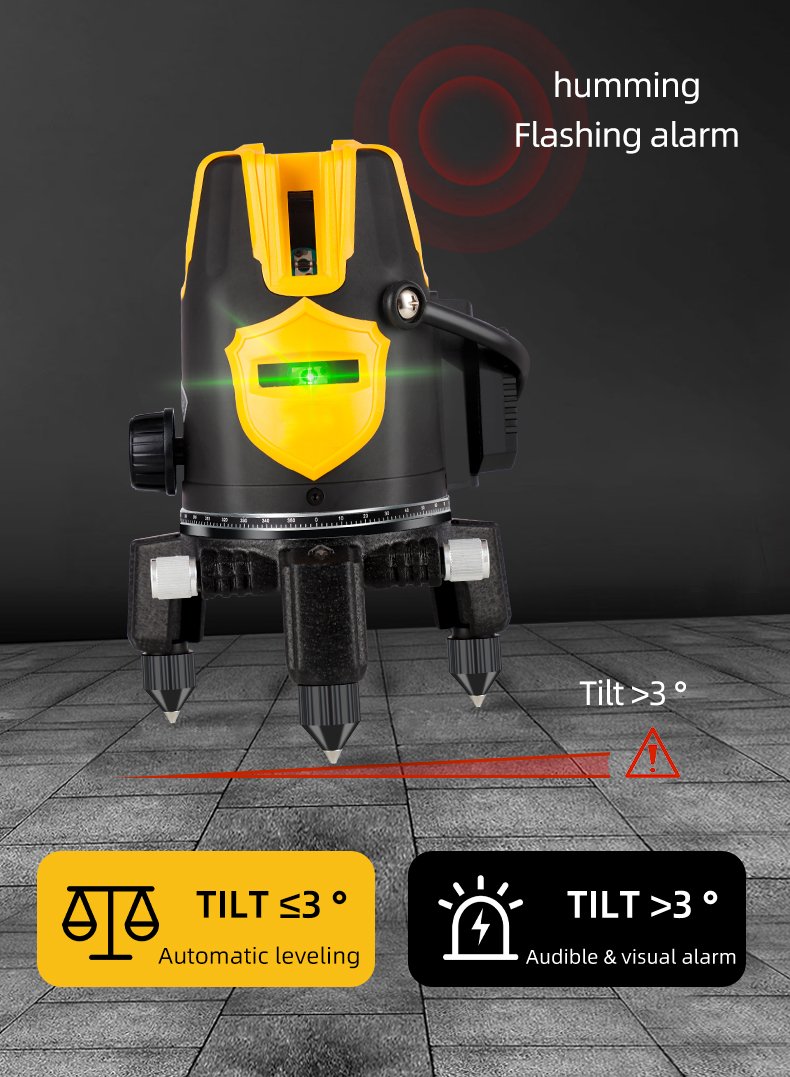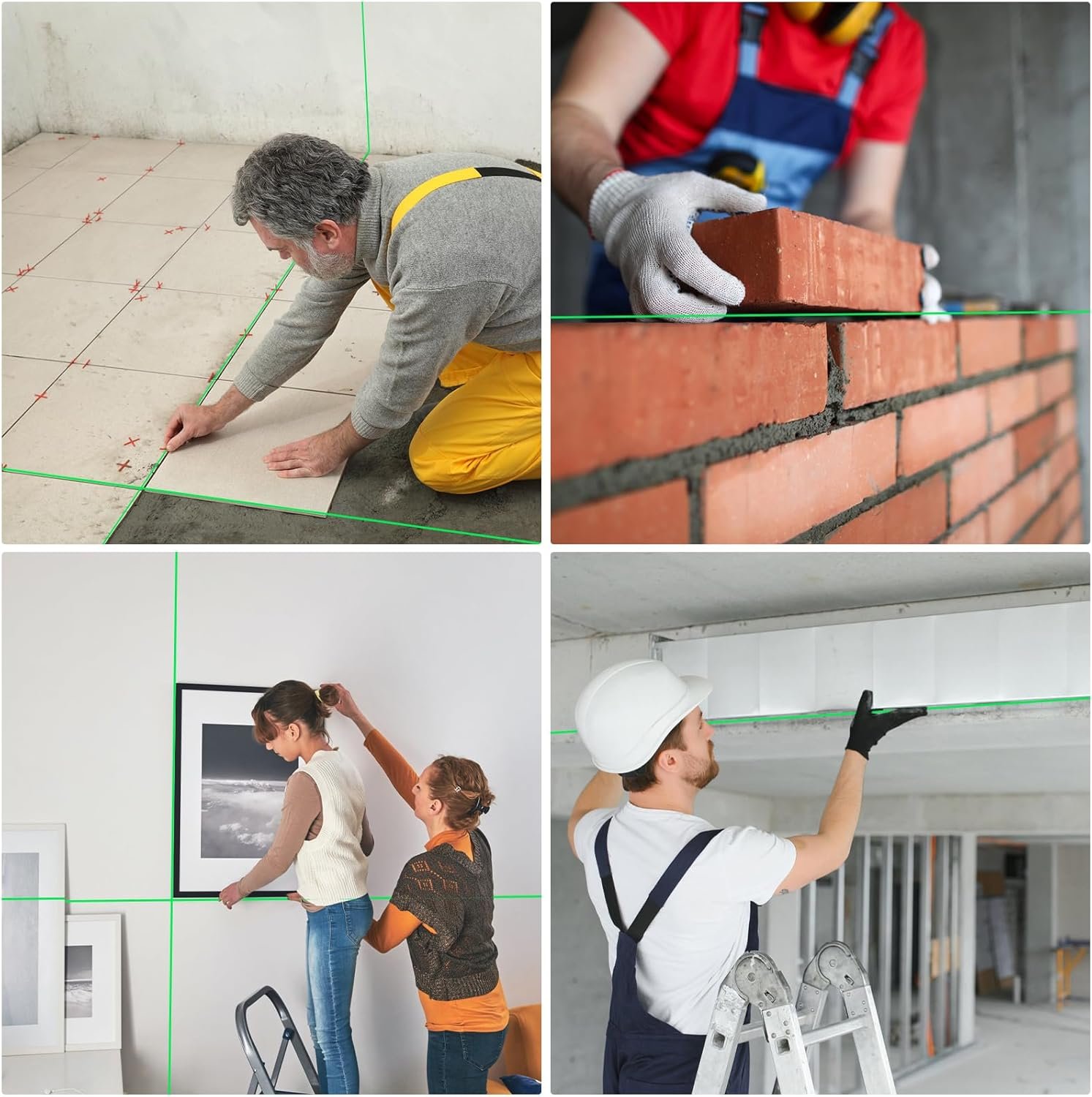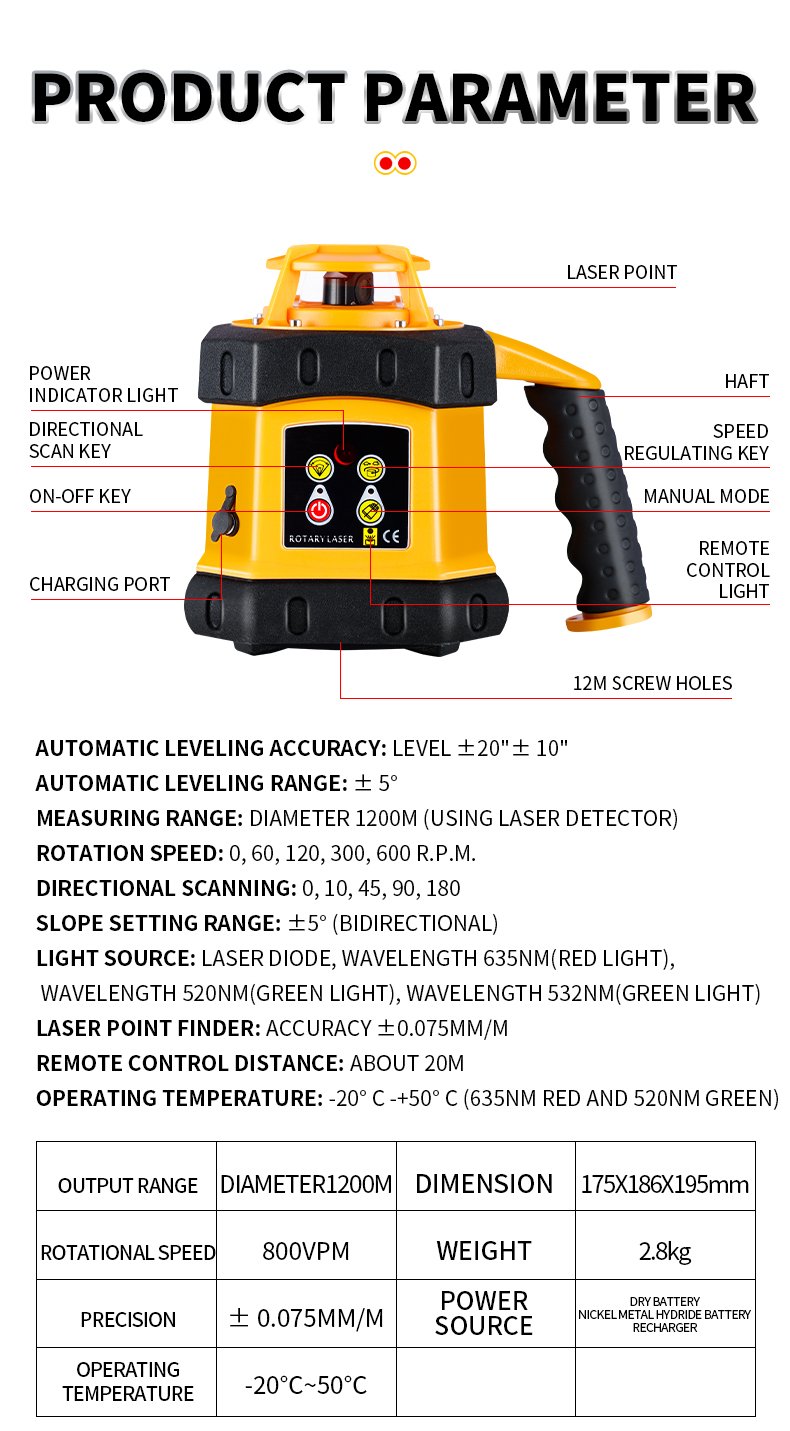In the bustling hub of Yucheng, Shangqiu, known as the hardware tools capital of China, stands Nxtools, a leading industrial and trading company. Nxtools has carved a niche for itself through the development, production, and sales of high-quality hand tools. In construction, carpentry, landscaping, and even interior design, precision is paramount. A slight miscalculation can lead to significant errors, costing time, money, and resources. This is where self-leveling laser levels come into play, revolutionizing how projects are executed with unparalleled accuracy and efficiency.
What is a Self-Leveling Laser Level?
A self-leveling laser level is a sophisticated tool designed to project a perfectly horizontal or vertical line (or both) across a surface. Unlike traditional spirit levels that require manual adjustments, a self-leveling laser level automatically compensates for uneven surfaces within a certain range. This is typically achieved through an internal pendulum mechanism or other advanced technologies.
The core of its operation lies in its ability to find and maintain a true horizontal or vertical plane without manual intervention. When the laser level is turned on, it uses gravity to align itself. If it’s within its self-leveling range (usually a few degrees), it will automatically adjust until the laser line is perfectly level. If the device is tilted beyond its self-leveling range, it will usually indicate an error, preventing inaccurate readings.

There are several types of laser levels, each suited for different applications:
Line Laser Levels: Project a single or multiple lines, ideal for aligning tiles, hanging pictures, or installing cabinets.
Rotary Laser Levels: Rotate the laser beam 360 degrees, creating a horizontal or vertical plane around the device. These are commonly used for outdoor projects like grading and fencing.
Dot Laser Levels: Project individual dots of light, useful for transferring points from one surface to another.
@nx.tools Laser level series products Green light level, infrared level, rotating laser level, etc., high-precision level, clear indoor and outdoor visibility, large battery, long-lasting battery life. #LineLaserLevel #RotaryLaserLevel #Laserlevel #Handtools #Factorysource #madeinchina ♬ 原创音乐 – Nx Tools
Why Choose a Self-Leveling Laser Level?
Accuracy and Efficiency
Self-leveling laser levels significantly enhance the accuracy of projects. By providing a precise reference line, they minimize errors and ensure that everything is aligned correctly. This is crucial in construction, where even small deviations can lead to structural problems.
Ease of Use
One of the most significant advantages of self-leveling laser levels is their user-friendliness. Unlike traditional levels that require careful manual adjustments, these devices are simple to set up and operate. This makes them accessible to both professionals and DIY enthusiasts.
Time-Saving
The automatic leveling feature saves a considerable amount of time. Instead of spending minutes or even hours manually adjusting a level, the laser level self-corrects in seconds, allowing users to focus on the task at hand.
Applications of Self-Leveling Laser Levels
Self-leveling laser levels are versatile tools with a wide range of applications:
Construction
From leveling foundations and walls to aligning ceilings, laser levels are indispensable in construction projects.
Carpentry
Carpenters use laser levels for installing cabinets, shelves, and trim with precision.
Landscaping
Laser levels are essential for grading land, installing fences, and setting up irrigation systems.
Interior Design
Hanging pictures, aligning décor, and ensuring that everything is perfectly straight are made easier with laser levels.
Key Features to Look for in a Self-Leveling Laser Level
When selecting a self-leveling laser level, consider the following features:
Accuracy: Look for levels with high accuracy ratings (e.g., ±1/8 inch at 30 feet).
Range: Choose a level with a range that suits your project needs.
Laser Color: Green lasers are more visible than red lasers, especially in bright conditions.
Battery Life: Opt for models with long battery life or the option to use rechargeable batteries.
Durability: Select a level that is built to withstand job site conditions, with a robust housing and water/dust resistance.
Self-Leveling Range: A wider self-leveling range allows for greater flexibility in setup.

Nxtools: A Premier Laser Level Manufacturer
Nxtools, based in the hardware tools capital of China, specializes in the development, production, and sales of high-quality hand tools, including self-leveling laser levels. With a modern manufacturing facility and a commitment to precision engineering, Nxtools has established itself as a trusted Laser Level manufacturer.
Nxtools Manufacturing Facility
Nxtools offers a range of self-leveling laser levels designed to meet the diverse needs of its customers. Each model is crafted with meticulous attention to detail and undergoes rigorous quality control to ensure optimal performance and reliability.
Advantages of Choosing Nxtools Laser Levels
Quality Materials: Nxtools uses only the finest materials to ensure that its laser levels are durable and reliable.
Advanced Technology: Nxtools incorporates the latest innovations in laser technology to provide accurate and efficient performance.
Competitive Pricing: Nxtools offers excellent value for money, providing high-quality laser levels at competitive prices.
Customer Support: Nxtools is committed to providing excellent customer support, ensuring that customers have a positive experience with their products.
How to Use a Self-Leveling Laser Level Effectively
1. Set Up: Place the laser level on a stable surface or tripod.
2. Power On: Turn on the laser level and allow it to self-level.
3. Adjust: If necessary, adjust the height or angle of the laser level to align the laser line with your desired reference point.
4. Mark: Use the laser line as a guide to mark your points or lines.
5. Verify: Double-check the accuracy of your markings before proceeding.
Step-by-Step Guide
Maintenance and Care
Storage: Store the laser level in a dry and safe place to prevent damage.
Cleaning: Clean the laser lens regularly with a soft cloth.
Calibration: Periodically check the calibration of the laser level to ensure accuracy.

Conclusion
Self-leveling laser levels are indispensable tools for anyone who values precision and efficiency. From construction and carpentry to landscaping and interior design, these devices offer unparalleled accuracy and ease of use. As a leading Laser Level manufacturer, Nxtools is committed to providing high-quality, reliable, and innovative laser levels to meet the diverse needs of its customers. Consider Nxtools for your laser level needs and experience the difference that quality and precision can make.
FAQs
Q1: What is the self-leveling range of a laser level?
A: The self-leveling range is the degree to which the laser level can automatically correct its alignment. Most laser levels have a self-leveling range of around ±4 degrees.
Q2: Can I use a laser level outdoors?
A: Yes, but it’s best to use a laser level specifically designed for outdoor use. These models often have a longer range and are more visible in bright sunlight. Green lasers are generally more visible than red lasers outdoors.
Q3: How do I know if my laser level is accurate?
A: You can check the accuracy of your laser level by setting it up and projecting a line onto a wall. Then, use a traditional level to verify that the line is perfectly level. If there’s a discrepancy, you may need to calibrate your laser level.
Q4: What is the difference between a red and green laser level?
A: Green lasers are more visible than red lasers, especially in bright conditions. This makes green laser levels ideal for outdoor use or in brightly lit indoor environments. However, green laser levels tend to be more expensive than red laser levels.
Q5: How often should I calibrate my laser level?
A: It’s a good idea to calibrate your laser level at least once a year, or more frequently if you use it heavily or if it has been dropped or subjected to rough handling.

